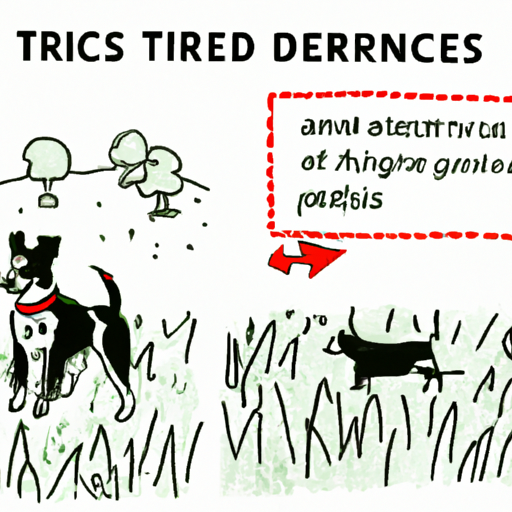Ticks are prevalent in many environments, and unfortunately, your beloved canine companions are not immune to these pesky parasites. Understanding where dogs get ticks is crucial in preventing tick-borne diseases that can lead to severe health consequences. This article aims to shed light on the most common sources of ticks on dogs, the prevention methods, and how to properly remove a tick if your furry friend becomes an unwilling host.
Key Takeaways
- Dogs primarily get ticks from tall grasses, wooded areas, and other pets that are already infected.
- Ticks are attracted to warmth and motion, making our active and sociable dogs prime targets.
- Regular tick checks and preventive measures can significantly decrease your dog’s risk of tick-borne diseases.
- Prompt and proper removal of ticks is crucial to prevent disease transmission.
Table of Contents
- Common Places Where Dogs Get Ticks
- Why Ticks are Attracted to Dogs
- Preventing Ticks on Dogs
- How to Properly Remove a Tick
- Frequently Asked Questions
Common Places Where Dogs Get Ticks
Ticks thrive in moist and humid environments, often found in tall grasses, woods, shrubs, and leaf piles. When your dog brushes against these areas, ticks can easily latch onto their fur. Ticks do not jump or fly, instead, they use their extended front legs to latch onto hosts as they pass by, a behavior known as questing.
Apart from outdoor environments, dogs can also get ticks from other pets that are already infested. This can happen during playdates, walks or even at home if you have multiple pets. Ticks can also be brought into your home by rodents, thereby infesting your indoor pets.
Why Ticks are Attracted to Dogs
Ticks are attracted to warmth, motion, and carbon dioxide – all of which dogs abundantly provide. Because dogs are social and love to explore, they often venture into tick-infested areas, making them prime targets for these parasites. Once a tick finds a host, it will find a spot to attach and feed, often choosing warm, less hairy areas on your dog’s body.
Preventing Ticks on Dogs
Prevention is the best defense against ticks. Here are several methods to keep ticks off your dogs:
- Avoid tick-infested areas: Stick to the path when walking your dog and avoid tall grasses or heavily wooded areas.
- Regular Tick Checks: Examine your dog’s skin and coat regularly, especially after walks or playdates. Pay attention to the ears, neck, skin folds, and other warm areas.
- Tick Preventatives: Use tick collars, spot-on treatments, or oral medications. Consult your vet to determine the best option for your dog.
- Keep your environment clean: Regularly clean your house and yard, and keep the grass short to reduce tick habitats.
For more information on tick prevention, check out this comprehensive guide on tick prevention for dogs.
How to Properly Remove a Tick
If you find a tick on your dog, it’s important to remove it promptly. Here are the steps for safe tick removal:
- Prepare your tools: Get a pair of fine-tipped tweezers or a tick removal tool.
- Remove the tick: Grasp the tick as close to your dog’s skin as possible and pull straight out with steady, even pressure.
- Clean the bite area: Clean the area with soap and water, and apply an antiseptic.
- Dispose of the tick: Place the tick in alcohol to kill it, then seal it in a bag and dispose of it properly.
In case you missed any ticks, regular grooming and vet check-ups can help identify and remove ticks. You can learn more about grooming your dog here.
Frequently Asked Questions
Q: Can dogs get ticks in winter?
A: Yes, dogs can get ticks at any time of the year. Although tick activity decreases in colder months, they do not completely disappear. Some species, like the black-legged tick, can remain active in winter.
Q: What diseases can ticks transmit to dogs?
A: Ticks can transmit a variety of diseases to dogs, including Lyme disease, Ehrlichiosis, and Anaplasmosis.
Q: Can ticks infest my home?
A: Yes, ticks can infest homes. They can be brought in by dogs, cats, or rodents. Regular cleaning and pest control can help prevent an infestation.
In the fight against ticks, knowledge is your best weapon. By knowing where dogs get ticks and taking appropriate preventive measures, you can protect your furry friend from these harmful parasites. For more tips on keeping your dog healthy, check out these articles on dog health and dog care.



